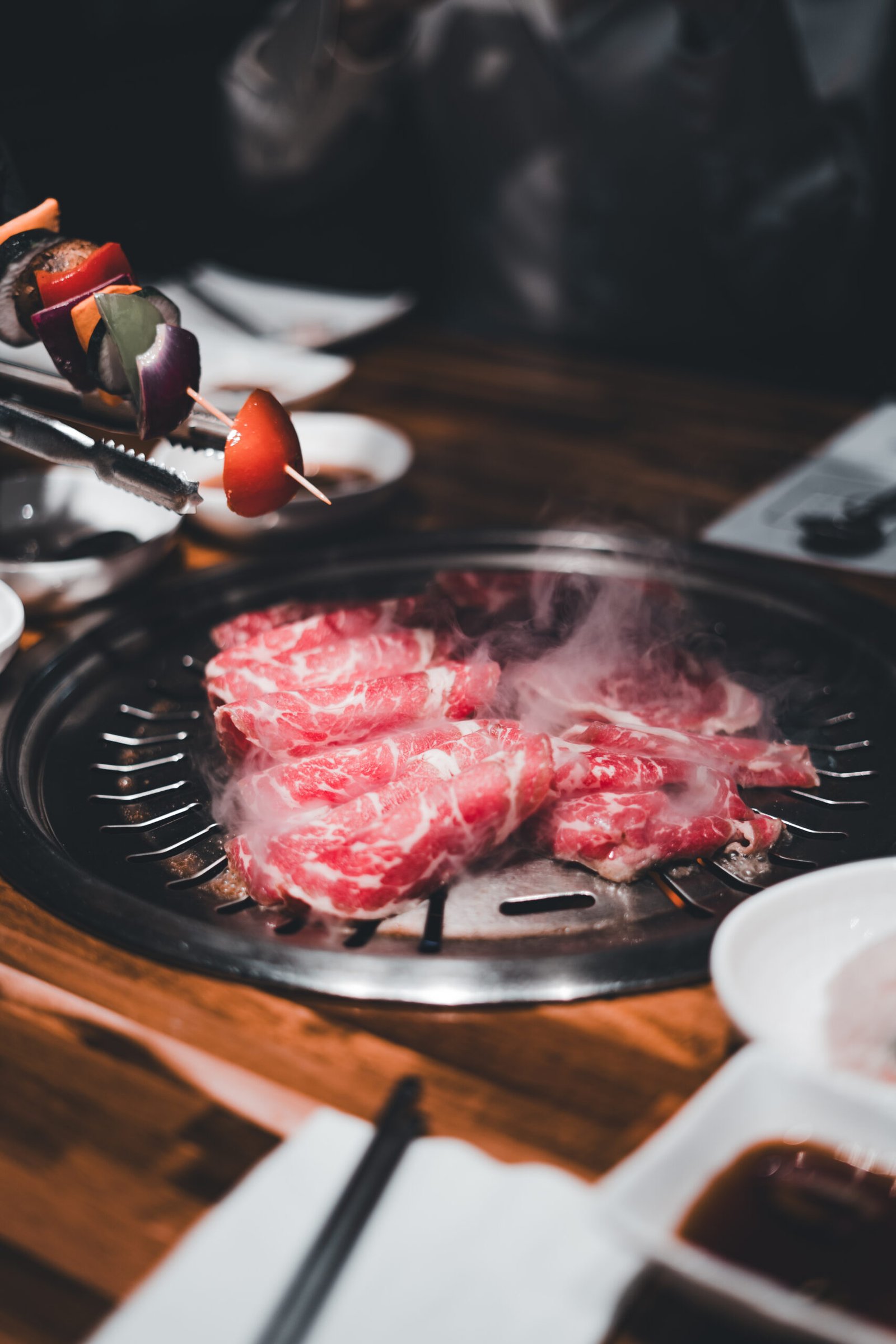Imagine sitting down to a light and refreshing meal on a warm summer day. As you take a bite of the Classic Caesar Salad, you are transported to a bustling Italian trattoria, with the rich flavors of crisp romaine lettuce, tangy Caesar dressing, and savory croutons tantalizing your taste buds. This iconic salad has stood the test of time, becoming a beloved favorite for its simplicity and timeless elegance. Whether you’re a seasoned fan or new to the world of Caesar salads, this article will guide you through the history, key ingredients, and preparation methods of this classic dish. Get ready to embark on a culinary adventure that will leave you craving another bowl of this impeccable salad.
Ingredients
Romaine lettuce
Romaine lettuce is the main ingredient in a Classic Caesar Salad. It adds a crisp and refreshing texture to the salad, making it a perfect base.
Parmesan cheese
Parmesan cheese is a key ingredient in a Caesar Salad, adding a rich and savory flavor. It is typically grated and sprinkled on top of the salad, providing a satisfying kick.
Croutons
Croutons are small, crunchy bread cubes that add a delightful crunch to the Caesar Salad. They are typically seasoned with salt and pepper, and can be either store-bought or homemade.
Caesar dressing
Caesar dressing is the heart of the Classic Caesar Salad. It is a creamy and tangy dressing that brings all the flavors together. The dressing is made with a combination of garlic, anchovies, lemon juice, Worcestershire sauce, Dijon mustard, olive oil, black pepper, and salt.
Anchovies
Anchovies are small, oily fish that are used to add a distinct umami flavor to the Caesar dressing. They are mashed and combined with the other dressing ingredients to create a rich and savory dressing.
Garlic
Garlic adds a pungent and aromatic flavor to the Caesar dressing. It is minced and mixed with the anchovies to create a flavorful base for the dressing.
Lemon juice
Lemon juice adds a refreshing and tangy flavor to the Caesar dressing, balancing out the richness of the other ingredients. It also helps to enhance the overall taste of the salad.
Worcestershire sauce
Worcestershire sauce is a dark, savory condiment that adds a complex flavor to the Caesar dressing. It provides a subtle tangy and umami taste, making the dressing more well-rounded.
Dijon mustard
Dijon mustard is a creamy and slightly tangy mustard that adds a unique flavor to the Caesar dressing. It adds a depth of flavor and enhances the overall taste of the salad.
Olive oil
Olive oil is used as the base for the Caesar dressing, providing a smooth and silky texture. It also adds a mild fruity flavor to the dressing, contributing to the overall taste of the salad.
Black pepper
Black pepper adds a subtle hint of spiciness to the Caesar dressing. It adds depth to the flavor profile and helps to balance out the other ingredients.
Salt
Salt is a crucial ingredient in the Caesar dressing, as it enhances the overall taste and brings out the flavors of the other ingredients. It is used to season both the dressing and the salad.
Preparation
Wash and dry lettuce
To prepare the lettuce for the Caesar Salad, start by removing any damaged outer leaves. Separate the leaves and rinse them under cold water to remove any dirt or debris. Pat the lettuce dry with paper towels to remove excess moisture. Finally, chill the lettuce in the refrigerator to keep it crisp and fresh.
Prepare dressing
The Caesar dressing is the soul of the Classic Caesar Salad. To prepare the dressing, mince the garlic and mash the anchovies. In a bowl, combine the minced garlic, mashed anchovies, lemon juice, Worcestershire sauce, Dijon mustard, olive oil, black pepper, and salt. Mix well until all the ingredients are thoroughly incorporated.
Make croutons
Croutons are a delightful addition to the Caesar Salad, providing a satisfying crunch. To make homemade croutons, preheat the oven to 350°F (175°C). Cut bread into cubes and toss them with olive oil, salt, and pepper. Spread the bread cubes on a baking sheet and bake for 10-15 minutes, or until they are golden and crispy. Allow the croutons to cool before using them in the salad.
Assemble the salad
Now that all the components are ready, it’s time to assemble the Classic Caesar Salad. Tear or chop the lettuce into bite-sized pieces and place them in a large salad bowl. Drizzle the dressing over the lettuce, ensuring that each leaf is coated with the creamy goodness. Sprinkle grated Parmesan cheese over the salad, adding a rich and savory touch. Finally, add the homemade croutons for that satisfying crunch. Toss the salad gently to combine all the flavors and serve immediately.

Washing and Drying Lettuce
Remove any damaged outer leaves
Before washing the lettuce, it is important to inspect each head and remove any outer leaves that may be damaged or wilted. This ensures that only fresh and crisp leaves are used in the salad.
Separate leaves
After removing the damaged outer leaves, separate the remaining leaves. This will make it easier to rinse them thoroughly and ensure that no dirt or debris is left behind.
Rinse under cold water
To clean the leaves, rinse them under cold water. Make sure to rinse both sides, gently rubbing the leaves to remove any dirt or residue. Cold water helps to refresh the leaves and remove any impurities.
Pat dry with paper towels
Once the lettuce leaves have been rinsed, gently pat them dry with paper towels. Removing excess moisture will prevent the dressing from becoming watery and help the lettuce retain its crispness.
Chill in the refrigerator
After washing and drying the lettuce, it is recommended to chill it in the refrigerator before assembling the salad. This helps to keep the lettuce crisp and cool, ensuring a refreshing and enjoyable salad.
Preparing Dressing
Mince garlic
To prepare the Caesar dressing, start by mincing the garlic. Mincing garlic finely will release its aromatic oils and ensure that its flavor is evenly distributed throughout the dressing.
Mash anchovies
Next, mash the anchovies using a fork or the back of a spoon. This step is important because it helps to break down the anchovies and incorporate their unique umami flavor into the dressing.
Combine garlic, anchovies, lemon juice, Worcestershire sauce, Dijon mustard, olive oil, black pepper, and salt
In a bowl, combine the minced garlic, mashed anchovies, lemon juice, Worcestershire sauce, Dijon mustard, olive oil, black pepper, and salt. Mix all the ingredients well until they are fully combined. The resulting dressing should be creamy and well-seasoned, with a balanced and tangy flavor.

Making Croutons
Preheat oven to 350°F (175°C)
To make homemade croutons, preheat the oven to 350°F (175°C). This temperature ensures that the bread cubes will bake evenly and turn golden brown and crispy.
Cut bread into cubes
Cut the bread into small cubes. The size of the cubes can vary according to personal preference. Some people prefer smaller, bite-sized croutons, while others like them slightly larger. Choose a size that suits your taste.
Toss bread cubes with olive oil, salt, and pepper
In a bowl, toss the bread cubes with olive oil, salt, and pepper. Make sure that each cube is coated with a thin layer of oil and evenly seasoned with salt and pepper. The olive oil helps to crisp up the croutons, while the salt and pepper add flavor.
Spread the cubes on a baking sheet
Spread the seasoned bread cubes evenly on a baking sheet, making sure they are not overcrowded. This allows the heat to circulate around each cube, ensuring that they bake evenly.
Bake for 10-15 minutes or until golden and crispy
Place the baking sheet with the bread cubes in the preheated oven and bake them for 10-15 minutes. Keep an eye on them to avoid burning. The croutons are ready when they turn golden brown and become crispy.
Allow to cool
After baking, remove the baking sheet from the oven and allow the croutons to cool completely. This step is important because it allows the croutons to firm up and become extra crispy. Once cooled, they are ready to be added to the Caesar Salad.
Assembling the Salad
Tear or chop lettuce into bite-sized pieces
To assemble the Classic Caesar Salad, tear or chop the lettuce into bite-sized pieces. This ensures that every forkful of the salad contains a mix of flavors and textures.
Drizzle with dressing
Once the lettuce is prepared, drizzle the Caesar dressing over the leaves. Use a spoon or tongs to gently toss the lettuce, ensuring that each leaf is coated with the creamy dressing. The dressing adds a tangy and savory flavor that brings the salad to life.
Sprinkle Parmesan cheese
Next, sprinkle grated Parmesan cheese over the salad. The cheese adds a rich and nutty flavor that complements the other ingredients. Be generous with the amount of Parmesan cheese, as it enhances the overall taste of the salad.
Add croutons
Now it’s time to add the homemade croutons. Sprinkle them evenly over the salad, ensuring that each bite contains a satisfying crunch. The croutons provide a delightful texture that elevates the salad experience.
Toss gently to combine
Finally, toss the salad gently to combine all the ingredients. Use tongs or salad spoons to mix the lettuce, dressing, Parmesan cheese, and croutons together. Take care not to crush the delicate lettuce leaves or break the croutons. The goal is to evenly distribute the flavors and textures, creating a harmonious and delicious salad.

Variations
Grilled chicken Caesar salad
For a heartier version of the Classic Caesar Salad, add grilled chicken. Grilled chicken breast or thigh meat can be sliced and placed on top of the salad. The juicy and flavorful chicken adds protein and makes the salad a more substantial main course.
Shrimp Caesar salad
Another delicious variation is the addition of shrimp to the Caesar Salad. Grilled or sautéed shrimp can be placed on top of the salad or tossed in with the other ingredients. The shrimp adds a succulent and savory element to the salad, creating a seafood twist on the classic.
Vegetarian Caesar salad
For those who prefer a vegetarian option, the anchovies can be omitted from the dressing. This variation still retains the classic flavors of the Caesar Salad and can be customized with additional vegetables or protein substitutes like tofu or tempeh.
Tips and Tricks
Massage the dressing into the lettuce leaves for better flavor
To enhance the flavor of the Caesar Salad, consider massaging the dressing into the lettuce leaves. Gently rub a small amount of the dressing onto each leaf, allowing the flavors to penetrate and infuse the lettuce. This technique helps to ensure that every bite is packed with flavor.
Use a high-quality Parmesan cheese
When making the Classic Caesar Salad, opt for a high-quality Parmesan cheese. Freshly grated Parmesan has a superior flavor and texture compared to pre-packaged grated Parmesan. The freshly grated cheese adds a creamy richness to the salad that cannot be replicated with the pre-packaged variety.
Add a touch of fresh lemon zest to enhance the citrus flavor
To enhance the citrus flavor of the Caesar Salad, add a touch of fresh lemon zest to the dressing. Lemon zest provides a bright and aromatic note that complements the tangy flavors of the dressing. Use a microplane grater or a fine grater to zest the lemon peel, being careful to avoid grating the bitter white pith.
Opt for whole anchovies instead of anchovy paste for a more authentic taste
If possible, choose whole anchovies instead of anchovy paste when making the dressing. Whole anchovies have a more authentic flavor and can be easily mashed and incorporated into the dressing. The anchovies provide the signature umami taste that is essential to the Caesar Salad.
Serving Suggestions
Serve as a side dish with grilled chicken or steak
The Classic Caesar Salad is a versatile dish that pairs well with various main courses. Serve it as a side dish alongside grilled chicken or steak. The tangy and creamy flavors of the salad complement the savory flavors of the meat, creating a well-rounded meal.
Top with grilled shrimp for a main course
To turn the Classic Caesar Salad into a satisfying main course, top it off with grilled shrimp. The succulent and flavorful shrimp add a protein boost and make the salad more substantial. The combination of the shrimp, creamy dressing, and crunchy croutons creates a delicious and filling meal.
Pair with a crisp white wine or a light beer
For the perfect beverage pairing, enjoy the Classic Caesar Salad with a crisp white wine or a light beer. The refreshing flavors of the salad are enhanced by the acidity and fruity notes of a white wine, while a light beer complements the savory and tangy elements of the dish.
Health Benefits
High in fiber
The Classic Caesar Salad is high in fiber, thanks to the Romaine lettuce. Fiber is essential for maintaining a healthy digestive system and promoting satiety.
Good source of vitamins A, C, and K
Romaine lettuce, the main ingredient in the Caesar Salad, is a good source of vitamins A, C, and K. These vitamins play important roles in supporting overall health, such as boosting immunity and maintaining healthy skin.
Provides calcium and iron
Parmesan cheese, which is sprinkled on top of the Caesar Salad, provides a good amount of calcium and iron. Calcium is important for strong bones and teeth, while iron is essential for healthy blood and energy production.
Can be made with healthier substitutions
The Classic Caesar Salad can be easily modified to accommodate dietary preferences or restrictions. For a healthier version, consider using low-fat or Greek yogurt as a base for the dressing instead of mayonnaise. Additionally, whole wheat croutons or whole grain bread can be used to add more fiber and nutrients. With these simple substitutions, the Caesar Salad can still be enjoyed guilt-free.

